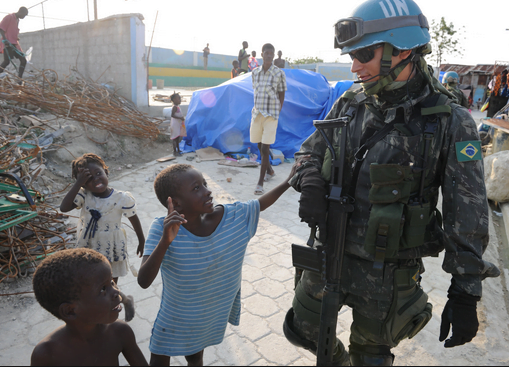UN Peacekeeping just got a little bit more expensive.
The UN has no standing army, so when the Security Council votes to create a new peacekeeping mission, it relies on member states to contribute troops to the cause. This is not a charity, though. The countries that contribute the bulk of blue helmets mostly come from the developing world and those countries are compensated for their contributions on a per-soldier per month basis.
After weeks of negotiation, UN member states agreed to a new compensation rate for UN Peacekeeping. The new rate amounts to a 10% raise for the first two years, to $1,332/soldier/month, and then further increasing to $1,365 in the third year and $1,410 in the fourth. In other words, it will cost the United Nations just under $16,000 for each of the approximately 100,000 blue helmets serving across 16 missions in 2014.
This is extraordinarily cheap. How cheap? A report last fall from the Center for Strategic and Budgetary Assessment found that the USA will spend an average $2.1 million in 2014 for each soldier in Afghanistan. In total the USA budgeted $74 billion for operations in Afghanistan through this fiscal year, even as troop levels decline from about 33,000 today to fewer than 10,000 by the end of the year. Again, this is orders of magnitude more expensive than UN Peacekeeping, which will deploy over 118,000 personnel this year, at a cost of $7.8 billion.
Yes, peacekeeping just got marginally more expensive due to the new compensation rates agreed to (by consensus) by UN member states. But it’s worth putting these figures in context. Compared to other kinds of military deployments, UN Blue Helmets come at an extraordinary discount.
